Photo Essay: Wonders of the White Goose
A photographic tribute to North America's magnificent light geese
A photographic tribute to North America's magnificent light geese
In North America, there are three different species of "white geese": the Ross's goose, greater snow goose, and lesser snow goose.
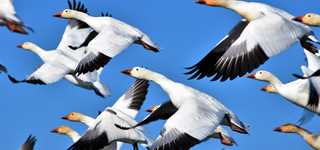
The fall migration begins in the Arctic, where the birds breed. Places such as Wrangel Island, Banks Island, Foxe Basin, and Hudson Bay are among the most important light goose breeding grounds.

Ross's geese create their own in-flight spectacles. The birds' short necks and reddish-purple caruncles at the base of their bill distinguish them from the other light geese.
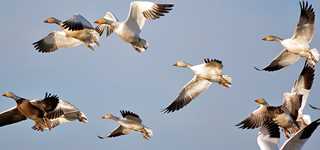
Melanin, a pigment concentrated in the wing tips of light geese, produces the black coloration and increases the primary flight feathers' structural strength and resistance to wear.
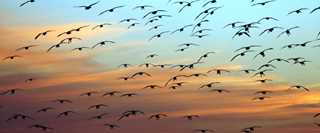
Snow and blue geese were once thought to be separate species. Today, we know that these birds are all lesser snow geese and are simply different color phases of the same species.
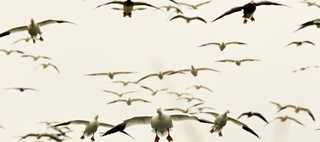
Blue-phase lesser snow geese are often called "eagle heads" by waterfowl hunters.
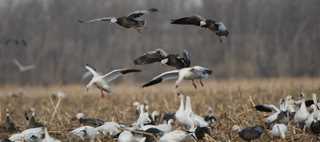
Few scenes in nature are more exhilarating than a massive flock of light geese during migration.
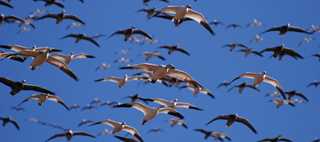
At the end of the day, light geese often roost on lakes and marshes where terrestrial predators, including man, are not a threat.
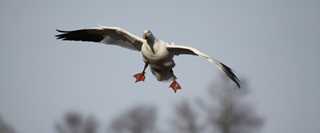
Overpopulation: Waterfowl managers are concerned that North America's massive light goose numbers can be detrimental to their own breeding habitat.
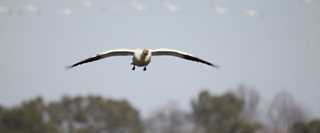
In spring, light geese backtrack thousands of miles to their tundra breeding grounds.

Light geese begin their return migration in February, leisurely following the snow line as it recedes north.
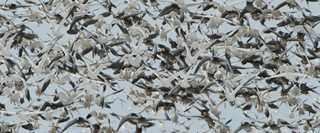
The distance traveled by light geese is a remarkable feat, and many have made this trip a dozen times, seeing every decoy spread imaginable. Their experience and knowledge make them difficult to decoy.
Ducks Unlimited uses cookies to enhance your browsing experience, optimize site functionality, analyze traffic, and deliver personalized advertising through third parties. By continuing to use this site, you agree to our use of cookies. View Privacy Policy